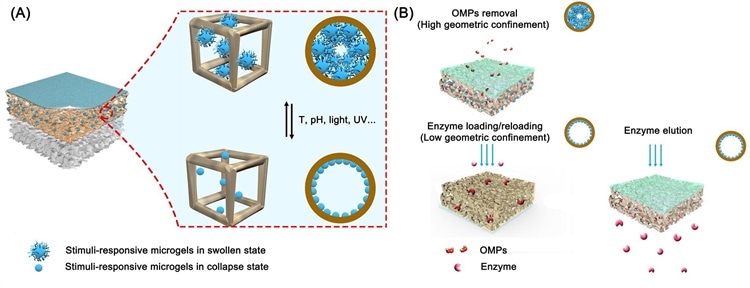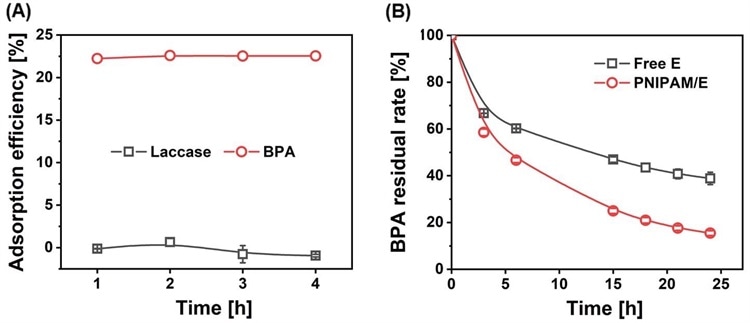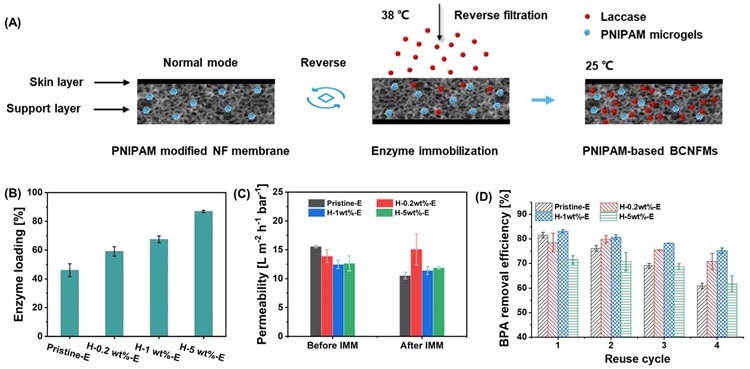The latest research in the journal iScience focuses on the modification of poly(N-isopropyl acrylamide) (PNIPAM) to create temperature-responsive BNMs with navigating capability.

Image Credit: LuckyStep/Shutterstock.com
PNIPAM modification improves enzyme stacking, inhibits enzyme permeability, and prevents membrane permeability loss caused by enzyme excess motility and agglomeration.
Organic Micropollutants
Organic micropollutants (OMPs), which include insecticides, medicines, and personal care items, have gained extensive attention due to their negative impacts on human health even at low levels. Because of their average molecular weight, great chemical stability, and ultra-low content, most OMPs are difficult to remove or degrade using typical wastewater treatment procedures.
Enzymes are environmentally friendly and long-lasting mediators with high catalytic effectiveness in the breakdown of OMPs.

Artificial smart BNMs by incorporating stimuli-responsive microgels into the porous support layer of NF membrane. (A) Schematic diagram of reversible functional gates of the support layer; (B) applications of smart BNMs in different operation scenarios. Zhang, H., Luo, J. & Wan, Y., (2021)
Membrane Filtration Process
However, the enzyme's weak nature and soluble feature result in low stability and recyclability, limiting its large-scale commercial applicability.
Membrane filtration is another appealing option for removing OMPs. It still has a low retention rate even when utilizing a reverse osmosis (RO) membrane.
The membrane is recognized as one of the most appealing immobilization supports for greater enzyme reuse because of its excellent biocompatibility, inexpensiveness, and ease of derivatization. As a result, several researchers have focused their efforts on constructing biocatalytic films for OMP elimination by immobilizing enzymes in/on the membrane.
Nanofiltration Membrane
Immobilizing enzymes in/on the substrate surface of the nanofiltration (NF) barrier by "reverse filtration" has made significant advancements in OMP elimination.
The produced biocatalytic NF membranes (BNMs) have better OMPs extraction efficiency due to the large effective surface area of the support layer and the good synergistic impact between the separation process and enzyme catalysis. Furthermore, polydopamine (PDA) coating was utilized to seal the protein inside the NF membrane. Nanomaterials like graphene oxide and metal-organic frameworks were inserted into the substrate surface to adsorb and stabilize the enzyme.
Research Findings
Precipitation polymerization of NIPAM with BIS crosslinker above their LCST in water in an N2-filled confined atmosphere produced the microgels.
The dried microgels have a diameter of around 478 nm. Dynamic light scattering (DLS) was used to measure the hydrodynamic diameter of PNIPAM microgels at 25 and 38 °C, which were 675 and 129 nm, respectively, demonstrating excellent temperature-responsive volume phase transition properties.
Many cross-linking agents were used to create PNIPAM microgels with mesh sizes smaller than laccase. The pristine NF membrane was put in a homemade cell in reverse mode (support layer facing feed), and a PDA adhesion layer was generated by DA coating on the inner side of the support layer. The PNIPAM microgels were effectively generated in-situ and contained in the NF membrane's PDA-coated porous support layer.

Interactions between PNIPAM microgels, laccase and BPA. (A) The adsorption capacity of PNIPAM microgels for laccase and BPA, respectively. The concentration of PNIPAM microgels in the experiment was 0.2 mg L-1; (B) BPA residual rate over reaction time. The error bars represent the standard deviation of at least three measurements. The concentration of PNIPAM microgels in the experiment was 0.1 mg L-1. Zhang, H., Luo, J. & Wan, Y., (2021)
However, as the number of reuse cycles increased, the BPA removal effectiveness of the PNIPAM-based BNMs declined. This might be due to a combination of enzyme permeability, product build-up, and enzyme shape modification.

Performance of PNIPAM-based BNMs. (A) Schematic diagram of PNIPAM-based BNMs preparation by "reverse filtration" method; (B) Enzyme loading, (C) membrane permeability variations in different operation stages during preparation, and (D) BPA removal efficiency over four reuse cycles of the pristine-E, H-0.2wt%-E, H-1wt%-E, and H-5wt%-E. IMM refers to immobilization. Zhang, H., Luo, J. & Wan, Y., (2021)
It is hypothesized that the microgels swell during the catalytic reaction at 25 °C, which may impede their development in the support layer and prevent excessive filling in the pores.
If microgels swelled during the catalytic reaction at 25 °C, their development in the support layer would be impeded, and excess filling in the pores would be prevented.
The temperature-sensitive PNIPAM-based BNMs with nano gating functions were effectively manufactured for the first time.
The PNIPAM modification increased the physical constriction intensity of the substrate surface, which increased enzyme loading, decreased enzyme leakage, and prevented membrane permeability reduction caused by laccase aggregation in the membrane.
 Search
Search




 京公网安备110402500047号
京公网安备110402500047号